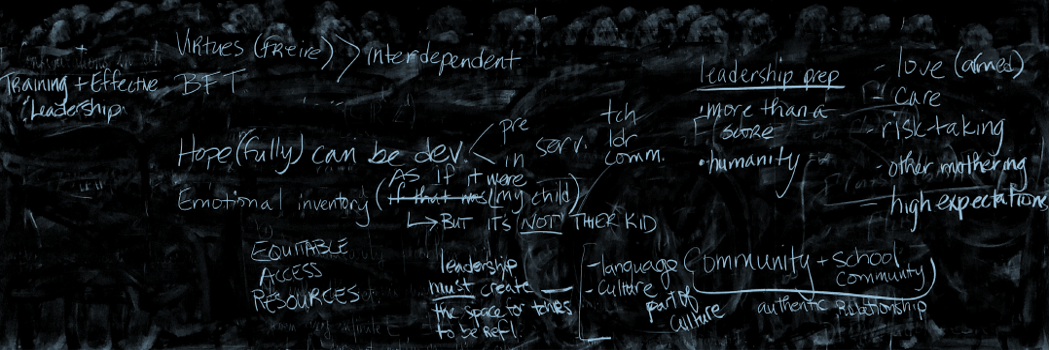Building off what others have shared here; I now understand that not only do we have different ways of caring but that deep misunderstandings and contradictions exist as to what caring entails. I found Valenzuela’s (1999) observations of competing forms of caring in Antrop-Gonzaléz & De Jesús’ (2006) particularly helpful. This idea of clashing expectations or understandings surfaced in various readings. In Rolón-Dow’s (2005) work, the authors CRT framework helped us see how this plays out beyond competing understandings of authenticity to how racism impacts how teachers and schools see students and families. When I hear stories about teachers like Mr. Rosenfield, who have come to understand why it would be best to teach in an orphanage, to see school as a good home away from a “bad home,” and have the audacity to ask another human being if they grew up in a barn, I wonder if CRT is enough to bring change to schools. Can this analysis, can our counterstories as people of color change deeply entrenched colonizjng and racist attitudes?
Antrop-Gonzaléz & De Jesús’ (2006) article raised other questions. Why do we always come back to soft and hard when talking about meeting the needs of students and communities of color? Why is lack of care or wisdom, what the authors describe as the problematic “Ay bendito syndrome,” characterized by a teacher’s feelings of pity that result in the lowering of expectations for students of color, described as soft? Simultaneously, I don’t agree that the other extreme, in which teachers come to form authentic relationships and hold high expectations can best be described as hard. I think we need to examine what underlying assumptions these words hold. I think we need to question the belief that students of color need “hard” structures and systems to excel. And to reimagine soft caring, as one that implies being in a mutually educational, dialogic, flexible, highly nuanced, open to change, and emotional relationship with another. It was important to see this issue of soft caring, one that absolves teachers from holding high expectations for students of color, in Rivera-McCutchen’s (2012) work. We see a new possibility, between hard and soft, in the author’s calling for a bridging between the affective and academic needs of students. The authors this week all argue for the type of space, home, or community that students describe at El Puente Academy (2006).



